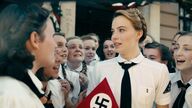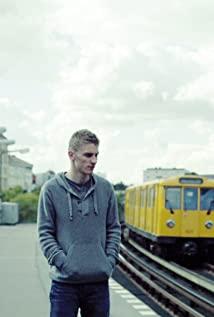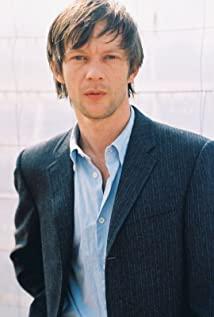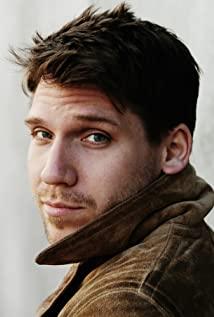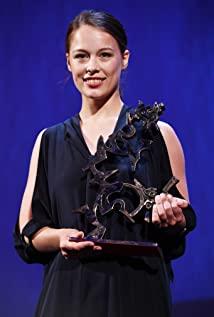1
Ten years ago, a film called "Badr and Mainhof Group" was nominated for Best Foreign Language Film at the 81st Academy Awards. This film tells the history of the rise and fall of the "Red Army Detachment" in West Germany in the 1970s. In the film, radical young people "voiced" to society through violence, and retaliated against "degraded capitalism" through bank robberies, explosions, and assassinations. The "Red Detachment" slaughtered in the name of the people. If you look up the term "modern terrorism", you will find that this force is one of the sources of terrorism.
Today, terrorism is well known all over the world. In people's perception, they are not only brutal and radical, but also have a certain "idealistic color." Especially in the 1970s, terrorist organizations similar to the "Red Army Detachment" also aroused the sympathy of some people. Among the voices of sympathy, it was the most common view to equate the "Red Detachment Operation" with revolution. In the movie, extremists listen to rock music and admire Che Guevara, which is given a romantic color.
Fifty years later, after constant evolution, terrorism has finally changed from an act of romantic revenge to what it is now, just like cancer cells, invading the body of society through continuous replication. It has become a problem to be solved in the world.
In 1989, at the Haus Est Museum in Klefeld on the Lower Rhine, fifteen plain gray paintings once again evoked memories in people's hearts. This group of paintings is called "October 18, 1977", and it is based on the Badr and Mainhoff terrorist group as the theme.
"October 18, 1977" Series Photos
On the walls of the museum, these works are silently exhibited. Out of respect for the personality of terrorists, the author put forward requirements for media coverage of works: no copying, no celebration of the release of new works.
The author of this group of shocking works is German painting artist Gerhard Richter. The reason why this group of paintings is called "October 18, 1977" is because that day is the backbone of the Red Detachment, Badr, Gullend, and Mai. Inhoff's day of death.
As expected, this exhibition subsequently caused an uproar. Critics believed that Richter portrayed "terrorists" as "martyrs." But in Richter's view, he did not sympathize with their "ideal", but mourned the failure of a meaningless ideal.
In an interview, he said, "Why does an ideology have such an impact on people; why is it necessary to have an ideology, and is it inevitable." And he also saw "the general danger of belief in ideology or religious fanaticism or madness ." , Is a practical problem faced by every country.” This is Richter’s reflection 30 years ago.
Gerhard Richter
In 2018, ten years after the screening of "Badr and Mainhof", the biographical film "No One" based on Richter's prototype was released, and soon the film was rated as this year by many film lovers The best value masterpiece. Just as Richter himself had doubts about ideology, the whole movie was discussed throughout the film. Under the ideology surrounded and shaped, who and where is the real "I"?
"No Master" movie poster
The film began with the "degenerate art exhibition" during the Nazi rule. In the movie, Richter appeared under Kurt's name and was taken by his aunt to visit the exhibition. "Degenerate Art Exhibition", as the name suggests, is the concept of "right and wrong" instilled by the Nazis. In the film, modern art was described by the Nazis as a kind of "visual disease".
Crusade against things that do not understand, do not understand, or oppose has always been the rule of dictatorship.
As shown in the movie, it was in 1937 that the modern painting artist was shown to the public. Once they were planned by the Nazis as a decadent art school, related works would be censored, and artists would be prohibited from exhibiting their works freely, holding teaching positions, or even banning painting for life.
This anti-decadent art movement was initiated by Nazi cultural official Goebbels and others. During the movement, hundreds of artists were classified as decadent artists, and 16,000 works of art were prohibited from spreading. The Bauhaus School, the famous pioneer education center in Germany, was also closed, especially teachers and students of Jewish and Russian descent who were considered a threat to the Nazi regime.
In 1934, Hitler gave a speech on decadent art. He said that the mission of art is not "to depict people's depraved state for the sake of filthy and filthyness, to express motherhood by painting inferior children, or to express in a way of depicting deformed idiots." Masculinity". This passage was later hung on the wall at the entrance of the "Decadent Art Exhibition" in Munich.
This politically strong cultural and artistic movement forced many artists to leave Germany and go into exile. Some artists even committed suicide (Kirschner committed suicide in Switzerland in 1938). Artists who stayed in Germany were often persecuted by the Gestapo. , Or later locked up in a concentration camp.
Kirchner, the artist who committed suicide by drinking bombs
In the movie, Kurt stayed in East Germany after World War II, and the Soviet ideology couldn't tolerate modern art. In the class, the professor told Kurt: Realist works that show the great unity of the working class are good, and the decadent elements in modern paintings are shameless.
In Gerhardricht's notes from 1964 to 1965, he wrote: A painting with a certain interpretative meaning and a certain meaning is not a good painting. The painting seems incomprehensible, illogical, and meaningless. It reveals many aspects, it dispels the standard, and the meaning and appellation of things, it shows us multiple meanings and infinite changes, thereby denying the emergence of a single meaning and viewpoint .
During that time, Richter had just found his own way of painting. By obscuring things, make everything equally important and unimportant. In that scene, the "I" in Richter or Kurt's mind is at work.
Blurred photo in a Kurt play
In fact, "No Master" only borrows part of Gerhard Richter's life. In the real world, this painter is known as the king of the "abstract world" and is also the "most expensive artist" in the world.
In 2016, two books were introduced into China, called "December" and "Message from a Moment of Silence" , both of which were co-authored by Richter and the German director and writer Krueger. Record some moments of life in an illogical and incoherent way. It seems meaningless, and it seems to provide some riddles in life.
Gerhard Richter "Message from a Moment of Silence" and "December"
2
With the consciousness of "I", there will be doubts from "I".
In the movie, Kurt fled from East Germany to West Germany; in reality, Richter also fled to West Germany from Dresden in 1961.
After escaping to West Germany, Richter continued his advanced studies at the Düsseldorf Academy. That year Richter didn't even know Duchamp and Dada. He walked blankly into a place freed from ideological control. In order to absorb a lot of information, he had to start from sketching and painting again. When he arrived at the Academy of Fine Arts, he met another master of art, Powys. In "The Masterpiece", the role of this master is called Witton, the professor who burned political posters in the classroom.
The subsequent explosion of Pop Art thoughts was largely influenced by Powys' artistic thoughts. Just like the charming professor in the movie, Powys in the history of art is considered to be a god-like evangelist.
Richter wrote the following message at the death of Powys in 1986:
"One day in 1962, I saw a young man wearing a hat, vest and jeans at the Düsseldorf Academy. I thought he was a student, but later found out that he was a new professor... In Powys, everything is always so different: he didn’t bother me because he didn’t follow the rules. He followed different standards and used different strategies; he was working hard for an "expanded artistic concept" at the time. , This concept is a challenge."
Challenge and tame have always been two major themes in art history.
During the First World War, the German poet Lisau wrote a patriotic poem "Hate Britain" against the enemy country Britain, and became the hottest literati in Germany for a time. Then, with the end of the war, he and his "Hate Britain" Become a laughing stock, nailed to the label of the imperial literati.
In the context of art, it is almost an eternal practice that imperial artists are not ashamed of others.
Historically, the period of "ideology" oppressing "modern painting" was concentrated in the 1930s and 1970s. During these forty years, apart from Nazi Germany in movies and the Soviet Union, Eastern Europe and, of course, China during the Cold War period. Era of Cultural Revolution.
If memory permits, people are not unfamiliar with "Cultural Revolution Art". In the history of Chinese art, the strangest scene occurred in the "Star Art Exhibition" on September 27, 1979. That year, the National Art Exhibition of the 30th Anniversary of the Founding of the People’s Republic of China was on display in the National Art Museum of China, and the iron fence outside the museum was covered with "strange" paintings.
These paintings quickly attracted many audiences who had planned to enter the museum. Those who were accustomed to the Cultural Revolution paintings were surprised: "The expressions of these works are free, and they have never been seen before. The exhibition is like an atomic bomb bombing into China. The same is true in the art world." This is the first time a new Chinese painter has issued a challenge.
1979 China Star Art Exhibition
This event is considered to be the beginning of Chinese avant-garde art, which opened up a new era of Chinese art, and finally has "art that is not understood by the public". Although the Stars Art Exhibition was cancelled after only being exhibited for two days, afterwards, On the evening of September 29, the promoters of "Xingxing" decided to hold a protest on October 1 of that year and formally sued the Dongcheng Branch of the Beijing Municipal Public Security Bureau. That year, this protest caused a sensation in the international press.
In 1979, China and the United States established diplomatic relations, removing the hats from the landlords and rich peasants... It was an era when the social environment moved from struggle to tolerance. The Xingxing Art Exhibition is a year when Chinese fine arts meets the turbulent modern movement of the 20th century. In 1980, the "Star Painting Club" was formally established and officially registered with the Beijing Artists Association.
In the preface of the first "Stars Art Exhibition", the artists said: The world provides unlimited possibilities for explorers.
Is modern art just "unintelligible" weird things?
If you look back at the 20th century, you will find that modern art is not only closely related to "I", but is also the result of blending with the background of the times.
Therefore, many people will ask whether modern painting has become more and more "obscure" or more and more "direct" in the 20th century? How are the countless genres that emerged from it related to the times?
3
***Use a picture to interpret the history of modern painting in the 20th century***
Main source of information: British historian Sir Herbert Reid's "A Brief History of Modern Painting"
Since then, all kinds of new art forms have not emerged one after another
...
4
Richter said in an interview as early as 1972: Art is social, which is a misunderstanding. Only when art is not directly used for practical work can it truly be relevant to society. If art is just art, it is useful to society, if art promotes something, it is not useful to society.
An artist has no master, just like the soul should be free.
In 1986, before painting the "terrorist", Richter explained in his notes his aversion to Nazi and CPSU ideology: new facts lead to new explanations, and therefore ideology, the act of pursuing ideology At most things that cause lifelessness, and easily become criminals.
Just like the wonderful metaphor about lottery in "No Master" : the number has no meaning, only if you win the prize, it will be given a new meaning. In Richter's or Kurt's view: the real meaning is covered by appearance (from an interview with Richter in 1977).
Just like terrorism, in Richter’s view, the "Red Army Brigade" is not only a terrorist, but also a victim of ideology. If people look back at the "Badr and Meinhof Group" ten years ago, You will find that this group of terrorists is a group of young, passionate, active in social movements, and even a group of people full of justice. But at the same time, Richter also saw the terrifying power that thoughts can produce after being bewitched by this powerful "idealism."
And the most touching picture in "No Master" is perhaps the scene where Kurt spreads his arms and feels the car whistling: an absolutely free self and a pure soul.
Reference: Zhu Qi "The Blurring of Images: Richter's Art Notes and Interviews"
Herbert Reid "A Brief History of Modern Painting"
In the "Zhiqi II" WeChat public account
Reply to the keyword "No Master" to send Gerhardricht's high-definition picture album
View more about Never Look Away reviews






